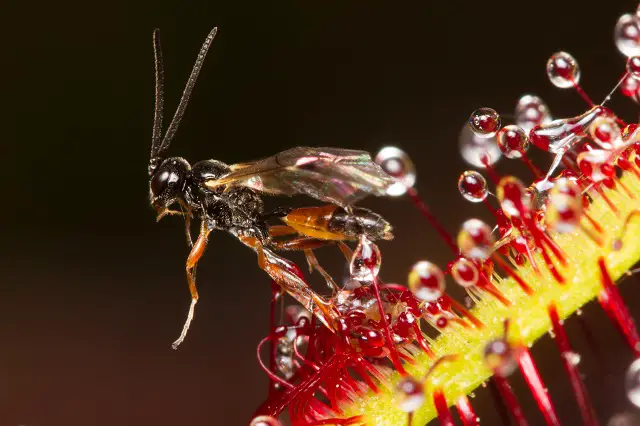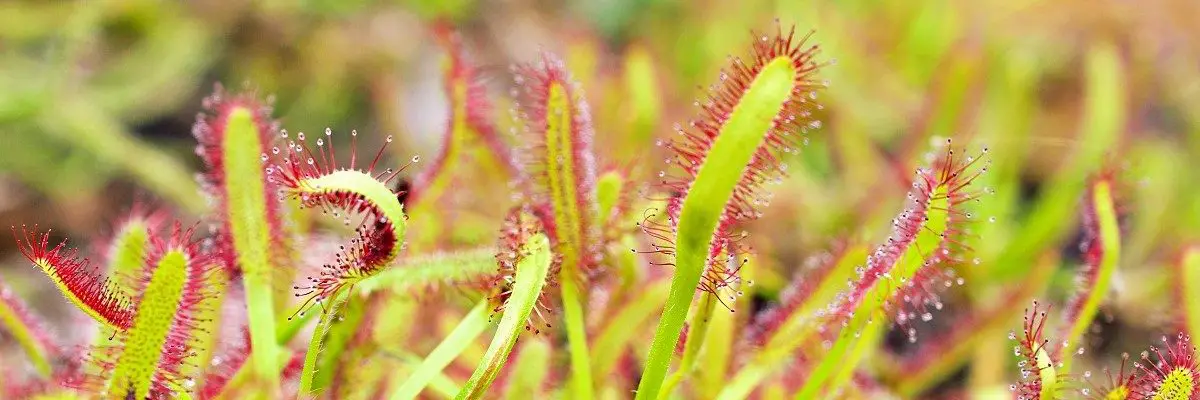The glistening balls of “dew,” material present on Drosera sundew, are known as mucilage. If your Sundew doesn’t have any dew on it, you may not be growing it correctly. Low humidity is the most frequent source of a dewless sundew. Temperature changes that are too large, sunlight that is too weak, and dirty water are all possibilities. We go into detail about why your Sundew might have lost its dew and how to restore it. First, there are a few things you should know.
Mucilage is a delicate substance. It’s a good way to tell whether a plant is stressed. Although it’s common and inevitable for Sundews to lose dew during transportation and shipment, if your plant is losing mucilage for no apparent cause, one or more of the conditions mentioned below may be out of sync.
Sundew Environmental Issues
Environmental issues are one of the most common causes of dew not appearing over your Sundew. Four key ecological influences regulate mucilage development, and the three main environmental concerns can lead to low dew development.
| The main environmental issues that impact dew development are: |
|---|
| Humidity: It is a crucial component to manage since proper humidity helps reduces water loss in the plant and increases the size of dew droplets. Humidity is essential in high temperatures, bright sunlight, and strong winds. If not necessary. The humidity level around your Sundew should be somewhere around 50% and 70%. Unfortunately, it is not always feasible or realistic to do so. In truth, any rise in humidity is welcomed. The simplest way to boost humidity artificially is to place your plant in a tray of water or use a humidifier to boost humidity. However, as long as you control the light and wind, many Sundews will be quite accommodating when it comes to humidity. |
| Light: Is also a principal element in the production of dew. When your plant does not receive adequate light, causing it to stay green, with very little red pigmentation on the tendrils, suppose there is insufficient sunlight for the Sundew. In that case, the dew it generates will be the majority of the water. It will only develop in high moisture environments and will not become sticky whatsoever, preventing the Sundew from catching prey. In comparison, if your plant receives excessive light, it will experience increased evaporation and will be unable to generate its dew throughout the warmest or brightest periods of each day. |
| Water: Keep your Sundew well-watered at all times. Keep your Drosera pot submerged in at least a few centimeters of water during the growing season. Water your Drosera only with rainwater or demineralized water. Sundews are sensitive to dissolved salts and minerals in tap water. Tap water will eventually kill your Sundew. |
| Wind: Dew is not a fan of hot, dry, or strong winds. They increase evaporation and water loss. Wind also tends to blow debris and dust onto your Sundew, decreasing the mucilage even more. Sundews cannot replace lost dew due to the low humidity caused by the hot wind, making leaves more prone to drying out. |
| Suggestion |
|---|
| Many individuals have had considerable success growing Sundews from hydroponic seed propagation products. They function as miniature greenhouses. They have a tray to fill with water and a plastic lid with ventilation to enable airflow while protecting against wind and dust. |

Soil Issues affecting Sundews Dew
Anaerobic soil can create unfavorable growing environments for sundew growth. Anaerobic soil is found commonly in swamps and wetlands, and it can also be developed in gardens and houseplants plants if they are watered too much, increasing the moisture level in the soil.
Soil compaction happens when soil parts are pushed together, reducing the space between them. The soil then becomes denser and stops water drain off. The problem of soil compaction with potted plants is particularly exasperating because normal pots are engineered to drain. In addition, poor soil drainage is not conducive to sufficient plant growth in the long run, especially when it comes to Sundew.
| Anaerobic soil or compaction complications can range from |
|---|
| Your sundews roots are unhealthy. Unhealthy roots will have little white coloring near the ends of the roots, as they’re much smaller and more delicate than normal roots. |
| Your sundews leaves will be affected. Eventually, they may lose their ability to produce dew, appear sickly, turn yellow, and die. |
| Soil would have a foul odor. Good, oxygenated soil will have no smell or a very mild odor. Anaerobic and compressed soils have a heavy or foul-smelling smell. |
| Fixes for Anaerobic soil or compaction complications |
|---|
| Repotting your Sundew in new soil is the ideal remedy for a sundew that is struggling from the bad ground. After you’ve repotted your Sundew, keep an eye on it over several weeks and note if it improves and if there are any other problems. |
| Feed your sundews daily if they are grown indoors. They will not need to depend solely on their roots if they are frequently allowed to consume bugs. |


